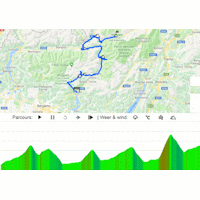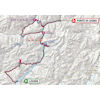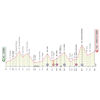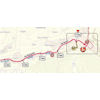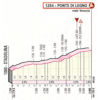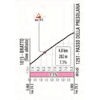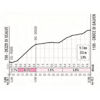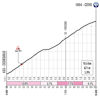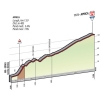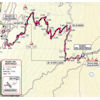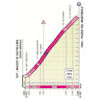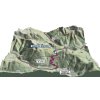Due to an avalanche threat the Gavia has been removed from the original route. The Passo Manghen – at 2,047 metres and included on stage 20 – will be the new Cima Coppi. The new route of the 16th stage features 4,800 metres of climbing.
The flag is dropped in Lovere before the riders stretch their legs on the Passo della Presolana and Croce de Salven. The route covers the climb to Cevo next – 10.6 kilometres at 5.9% -, a peak that’s crested halfway through the race.
The race moves through Edolo before climbing to Aprica. Following a false flat first kilometre the steepest section is a 1.2 kilometre slope at 11.2%. The ascent to Aprica amounts to 13.9 kilometres and the average gradient sits at 3.4%.
The Giro d’Italia descends to the valley of the Adda river to tackle the Passo di Mortirolo. Located at 1,854 meters, the pass was a dust road until 1990, but when it was paved at last the pass became stuff for legends in an instant. The route takes in the ascent from Mazzo, which is the toughest side: 12.8 kilometres and an average gradient of 10.1%. Four kilometres up the climb and the riders tackle ramps up to 18%. It is part of the section between kilometre 3.5 to kilometre 9.7, which is averaging a brutal 12%. The Mortirolo is ruthless without one moment of rest for the screaming legs.
The riders plummet down a technical descent and follow the valley of the Oglio upstream. This is a false flat of 16 kilometres to the line. Familiar terrain as well, since the route covered this section before the first passage in Ponte di Legno.
The first three riders on the line win time bonuses of 10, 6 and 4 seconds, while the second intermediate sprint – at kilometre 185.9 – comes with 3, 2 and 1 seconds.
Another interesting read: results/race report 16th stage 2019 Giro d’Italia.
Giro d’Italia 2019 stage 16: routes, profiles, more
Click on the images to zoom
